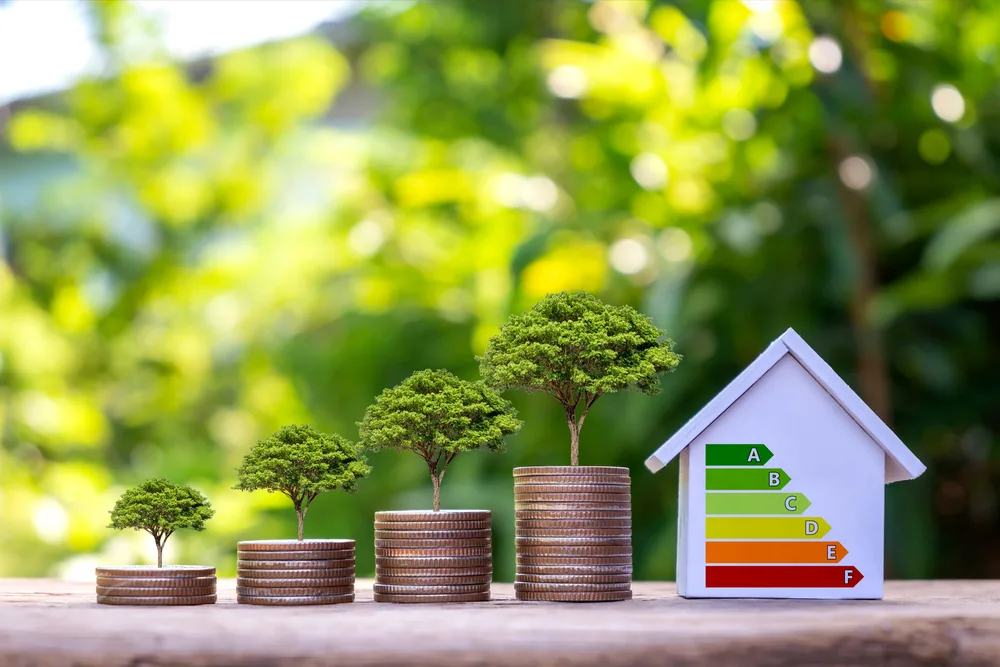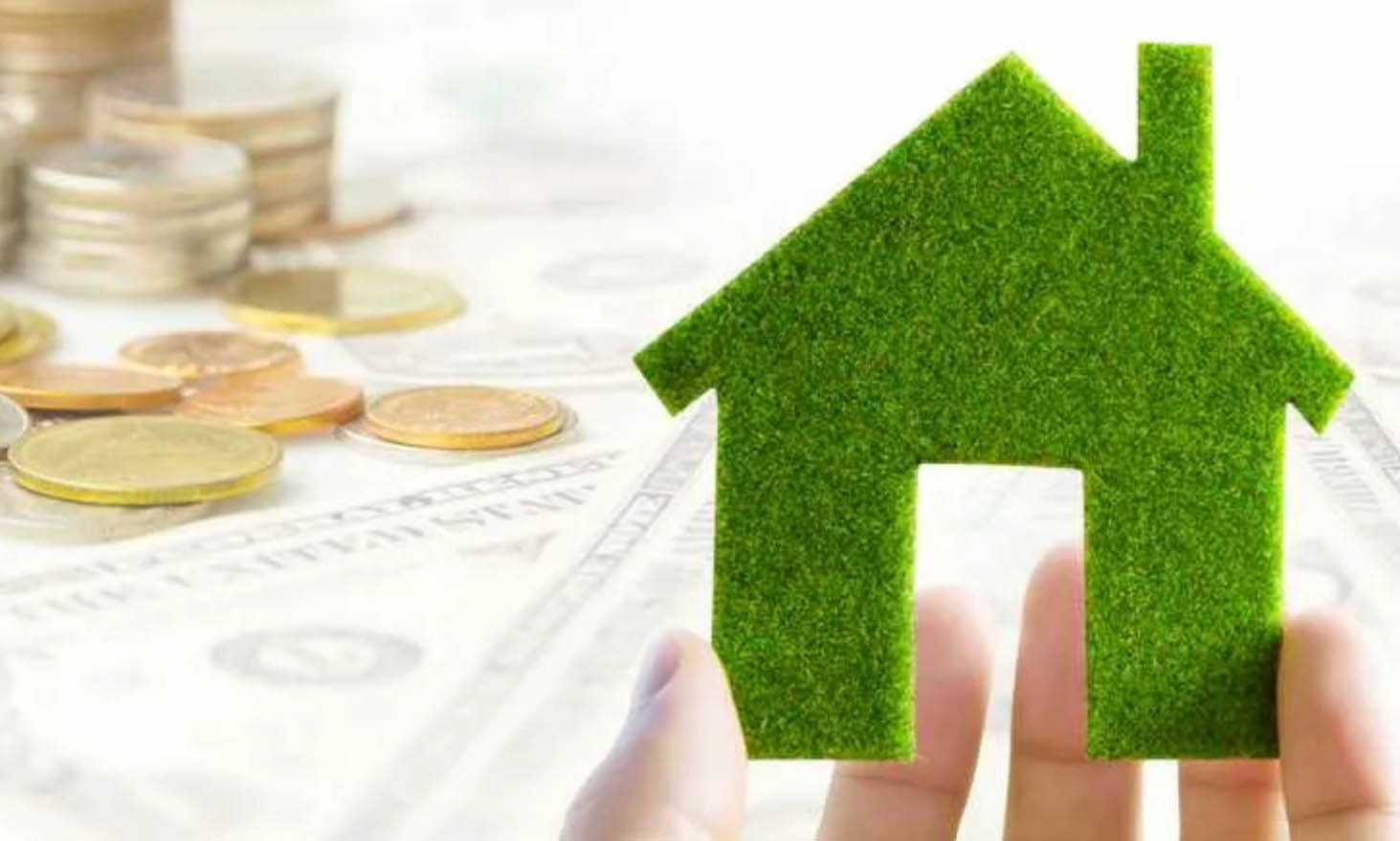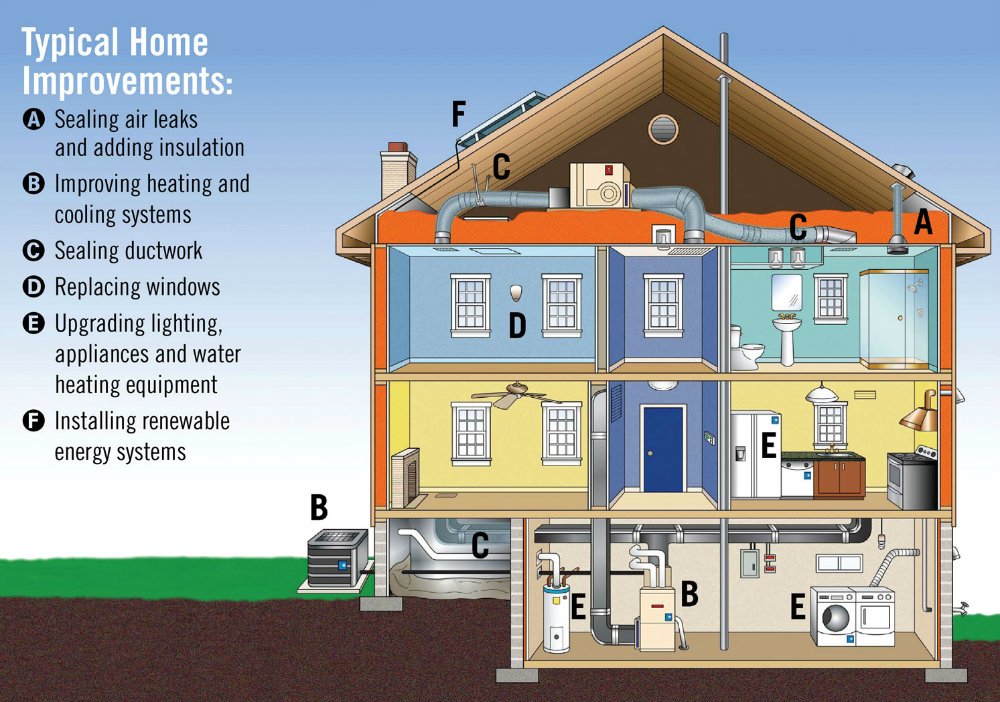In the face of growing concerns about climate change and soaring energy prices, it has never been so crucial to make one’s home energy-efficient. Homeowners in the UK are actually looking at ways to reduce their carbon footprint and decrease energy bills to have a more sustainable living environment. Still, improving energy efficiency needn’t have to mean expensive upgrades or major renovations.
First, there are some easy, inexpensive things you can do to make your home more energy-efficient, save money, and help protect the environment.
1. Upgrade Your Insulation
Improving the insulation in the house is one of the best ways to make it energy-efficient. Poor insulation is one of the most common problems that most houses face in the UK, particularly the older ones, resulting in heat loss and increased consumption of energy.
Loft Insulation
About 25% of heated heat gained is lost through the roof. Because of that, adding or improving loft insulation prevents heated or cooled air, respectively, inside the house.
Wall Insulation
The walls are another avenue through which heat escapes, especially solid walls that are common in old houses. Fixing these energy-wasting walls with cavity wall insulation is one of the high-impact ways. In such solid walls where cavity wall insulation cannot be considered, either internal or external wall insulation is performed.
Insulation of Floors
Most of the floors, when above unheated areas like garages or basements, can be prone to heat leaks. These points significantly show large differences in terms of energy consumption.
This will consequently help to increase insulation in your house, thus turning it into a more comfortable place by reducing the need for heating and cooling systems to work extra hard.
2. Seal Drafts and Gaps

Gaps around windows, doors, and other openings can let a surprising amount of heat escape, making your heating system work harder than it needs to. Sealing drafts is an easy, low-cost way to improve energy efficiency.
Weatherstripping and Draught Excluders
Installation of draft excluders on the doors and windows is an easy fix in order to save the warm air from escaping. One can also weatherstrip around the doors and windows to seal little gaps.
Letterboxes and Chimneys
Sealing gaps can be done here too. A good idea is to use a letterbox draught excluder or even chimney balloons when not in use.
By sealing these drafts, you reduce the constant heating of the home, thus reducing energy bills.
3. Energy-Efficient Lighting

Lighting in your house consumes a great deal of energy. The conventional kind of bulbs, the incandescent, are not friendly to energy; much of the consumed energy is transformed into heat rather than light. More energy-friendly lighting will eventually save you some money.
LED Bulbs
LED bulbs are presently the most energy-efficient option among all alternatives in lighting. Their maximum consumption is 85% less than that of incandescent bulbs. They can also last much longer with a cost-effectively equivalent investment.
Smart Lighting
Smart bulbs or smart lighting, on the other hand, tend to reduce energy consumption by allowing one either to turn the lights on or actually to change their brightness and act according to built-in timers—not to be used redundantly.
You can save on electricity without sacrificing illumination by installing energy-efficient light bulbs.
4. Smart Thermostats
Most households in the UK consider heating to be a big expense, and when it gets really cold outside, that is when energy consumption can get most excessive. On the other hand, smart thermostats can provide you with better management of your heating and cut down unnecessary energy consumption.
Smart Thermostats
Control your heating remotely with a smartphone app that can adjust the temperatures based on your schedule, even learning over time how to set your preferences. That means your heating will turn on only when you need it to and won’t waste energy on heating an empty home.
Energy-Saving Modes
Most of the smart thermostats can also have energy-saving features like programming the thermostat to turn down heating when one is away and turn it back up before one’s arrival.
A smart thermostat can help you make sure you’re not overheating your house more than it needs to be, which could save you a lot in energy.
5. Replace Appliances with Energy-Efficient Ones
Another easy way to save on energy consumption within your house involves replacing old inefficient appliances with modern, energy-efficient ones. For example, some appliances in the UK are rated in regard to the efficiency of working from A+++ for those most efficient to G, the least.
Efficient Washers and Dishwashers
Of late, these two come into the market and consume lesser water and lesser electricity. So in cases when purchases in such brands can be affordably done, prefer A-rated and above to offset bills for power and water consumed by home occupants.
Fridges and Freezers
Operating these appliances through the day and night, energy efficiency in an upgraded model will have big savings over a long period of time.
Although new appliances can be very costly to purchase upfront, they are definitely worth the investment due to long-term energy savings.
6. Consider Installing Solar Panels
If you own your own house and you can look to long-term investment, then definitely solar panel installations are something one would have found great in finding renewable energy with less reliance on grids. The most important benefits behind the usage of photovoltaic panel systems exist, which convert sunlight into merely electrical functions existing within a particular household.
Electricity Bills
Solar energy can help you reduce your bills tremendously, sometimes even selling the extra to the grid.
Government Incentives
The UK government has attached several incentives with solar panels; one of them is SEG, Smart Export Guarantee, which allows individuals to generate some revenue on the additional energy produced by the solar panel. Although they require a great upfront investment, solar panels can cut down your expense in the longer run and, at the same time, reduce your carbon footprint.
7. Double or Triple Glazing
Other common heat losses in a house are through the windows. Replacing single-glazed windows with double or triple glazing will be an improvement to the insulation in your home, thus reducing your energy bills.
Double Glazing
Double-glazed windows are twin panes of glass divided by a sheet of air and gas bound together for better insulation against single-glazed windows.
Triple Glazing
Triple glazing involves the addition of a third pane of glass for maximum insulation. This is quite useful in homes where the climate is very cold.
The investment in double or triple glazing will serve to keep one’s home warm in winter and, therefore, reduce the necessity for excessive heating.
8. Maintain Your Heating System
This, by all means, will make all the difference in efficiency, since regularities in heating maintenance are in place. Whether a gas boiler, heat pump, or any other system you may have installed, maintaining such equipment under prime conditions will ensure peak efficiency with no wasting of energy.
Annual Servicing
Servicing of the boiler by a capable professional should at least be annually done in order to make sure that the boiler is in good condition.
Bleed Radiators
Trapped air in your radiators can make them work less efficiently. Bleeding them once a year will ensure they are always working at their full capacity.
This will reduce energy consumption in heat production, since a well-maintained heating system is bound to be more efficient, hence costing less in terms of energy expenses.
9. Energy-Efficient Window Treatments
Your window treatments can also help with the energy efficiency of your home: the proper curtains, blinds, and shades will let you save from heat loss in winter and keep your home cool during summer.
Thermal Curtains
Thick, insulated curtains or blinds do not let the heat escape through your windows during winter, while reflective or light-colored blinds reflect sunlight away from your home during summer, keeping it cool.
Window Films
Proper application of a reflecting UV window film reduces solar heat gain throughout the warmer months by lowering demand for air conditioning.
The right window treatments can just be what it takes to bring in efficiency into your home all year long.
10. Use Appliances Wisely
How you use your appliances can make quite a big difference in the way you consume energy altogether. Small changes in your habits can result in noticeable savings on your energy bills.
Lower Temperature Washing of Clothes
Washing clothes at lower temperatures, such as 30°C instead of 40°C, saves a lot of energy with no loss in cleanliness. Similarly, unplugging appliances: Most electrical devices continue to use energy even after being turned off. Pull these devices out when not in use, or use a master power strip where several can be shut off together, to decrease your standby power use.
Boil Only the Water You Need
Every time you use the kettle, fill it with only the amount of water you would be using at the time, not to its full capacity every time. These simple habits make you more energy-conscious and cut down on unnecessary waste of energy.
Conclusion
Increasing the energy efficiency of your house does not have to be in large-scale renovation or in expensive upgrade form. Small, simple steps can go a long way in making their difference: improving insulation, replacing energy-intensive appliances with energy-efficient ones, and changing energy use practices. This would go a long way in reducing the carbon footprint, lowering your energy bills considerably. The UK government also gives subsidies to individuals on grants that such improvements in the energy efficiency front would have low costs. What you will benefit from is more than contributing towards fighting climate change but a house that is both comfortable to live in and cost-effective. Try putting one or two of them into practice over time to an energy-efficient home. Your future self—and the planet—will thank you.
